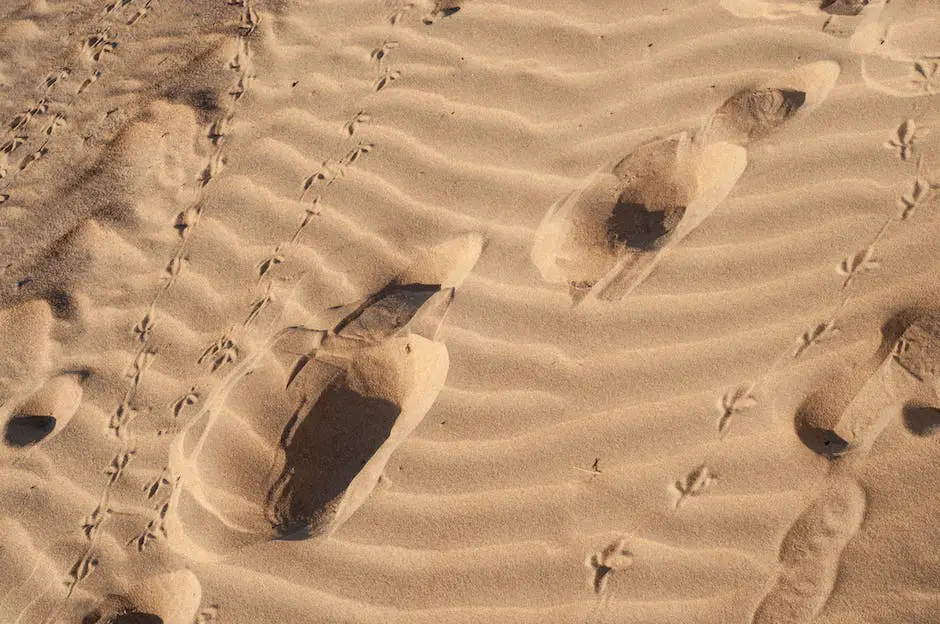The Biological Rationale Behind Males Having Nipples
Why do males have nipples? The presence of nipples in males is a result of embryonic development. During the early stages of fetal development, all human embryos follow a similar blueprint before sexual differentiation occurs. Both males and females possess mammary ridges, also known as milk lines or mammary lines, which extend from the armpit region down to the groin. In females, under the influence of female sex hormones like estrogen and progesterone, these mammary ridges develop into full breasts with milk-producing glands, ducts, and nipples, which serve the purpose of breastfeeding. In males, however, the mammary ridges typically do not undergo further development, as male sex hormones like testosterone suppress the growth of mammary tissue. Nevertheless, the nipples themselves still form during embryonic development before the sexual differentiation occurs. Therefore, males have nipples as a vestige or remnant of this shared developmental process. While they do not serve a functional purpose in males, they are essentially a byproduct of our common developmental history before sexual characteristics diverge.
Why do males have nipples? This seemingly unimportant question, which is occasionally inquired over in idle conversations, has important biological, genetic, and evolutionary consequences. An intriguing investigation is here as we untangle the complexities of human and mammalian development, promising insights from the evolutionary viewpoint on male nipples.
We hope to shed light on the fascinating topic of sexual dimorphism by exploring the idea of the “default” human template and explaining why both sexes have nipples.
Moving forward, we shall explore in detail the influential roles of relevant genetic codes and how they signal the development of nipples during the embryological stage. A comprehensive examination of the functionality of nipples amongst different species would further enrich our understanding, illuminating the varying characteristics and surprising similarities within the vast mammalian world.
Evolutionary perspective on male nipples
Evolutionary Traces: Decoding the Curious Case of Male Nipples
Human anatomy, over the course of time, has been sculpted by the omnipotent hands of evolution. People have often, however, been intrigued by the seemingly unnecessary vestigial attributes in our anatomy, one such feature being the presence of nipples in males. Scientifically, the reason behind this evolutionary puzzle is rooted in concepts of embryonic development and the tenets of natural selection.
During the embryonic stage, all humans follow the same blueprint of development, regardless of the eventual sex. The differentiation between male and female characteristics happens much later, under the influence of specific hormones. This primary stage of development, known as the ‘bipotential stage,’ elucidates why men have nipples. The nipples start forming before the Y chromosome has the opportunity to dictate anatomical gender differences, and as a result, both genders end up with nipples.
To understand this peculiarity more profoundly, one must delve into the fundamental aspects of evolution, encapsulated by the quintessential phrase – survival of the fittest. Here, ‘fittest’ does not essentially dictate only the strongest or most intelligent but pertains to those individuals most compatible with the environment or, in other words, those most adept at propagating their genes.
Under the aegis of natural selection, traits that ensure or enhance survival and reproductive success are typically preserved and passed on to subsequent generations. However, evolution isn’t always about gaining characteristics. The vast evolutionary landscape is also strewn with examples of trait loss or reduction when those attributes become inconsequential to survival or reproduction.
Male nipples do not confer any direct reproductive advantage, true. Yet, they persist. This persistence can be explained by the theory of ‘negative selection’. According to this perspective, the absence of nipples in males would not afford any significant survival or reproductive advantage. Therefore, evolution does not actively select against the presence of nipples in males. The biological cost of maintaining such traits is minimal, and hence, they prevail.
The arena of evolution isn’t merely about the grand and conspicuous; it’s also equally about the subtle and obscure. The presence of nipples in males may spark curiosity and inspire amusement, yet their existence beautifully encapsulates the intricate dynamics of embryonic development, evolution, and natural selection. It testifies that evolution is not merely a creator but also a curator, presiding over not just what is essential but also what doesn’t pose a hindrance. Evolution’s masterpiece, thus, is not perfection, but practicality.

Genetic and embryological development of nipples
Our genetic blueprint, irreducibly nuanced and exquisitely complex, holds the key to myriad biological phenomena – one of the most intriguing of which is the formation of male nipples. This paradox of human anatomy, although puzzling, is most assuredly a product of a beautifully orchestrated interplay between genetics and embryological development.
A biological narrative is often disclosed in embryogenesis – the vital process where an organism grows and morphs from a zygote to a full-fledged organism. The concept of the ‘bipotential stage’ is a fundamental axiom of embryogenesis – a term that references the early embryonic phase when both male and female exterior genital characteristics are identical and undifferentiated. During this period, both sexes possess a pair of rudimentary ‘milk lines’ that extend from the armpits to the groin, and it is within these lines that future mammary glands—including nipples—will form.
Around the sixth or seventh week of embryological development, the nipples begin to evolve regardless of the sex of the embryo, secured by the activity of the EDA gene. This gene variation activates the pathway responsible for nipple and areola formation in both sexes, forming an outline for mammaries long before sex-specific hormones like estrogen and testosterone come into play.
The subsequent period of development is profoundly influenced by the SRY gene situated on the Y chromosome, a gene solely responsible for male sex determination. When the SRY gene is activated typically within the seventh to twelfth week of pregnancy, it triggers the formation of testes. These, in due course, lead to the production of testosterone and anti-Müllerian hormone, inducing male characteristics while suppressing the growth of female structures. But crucially, the SRY gene and the resulting surge of testosterone do not negate the previously formed nipples.
In the overarching narrative of evolution, male nipples may initially appear to be an incongruous anomaly. And while they do not offer direct reproductive advantages, their presence does not present any particular disadvantage to survival and reproduction—thus the process of negative selection hasn’t acted upon it. In essence, according to the time and energy hypothesis, the cost of phasing out a trait that is not harmful or biologically expensive is often significantly larger than simply maintaining it, illustrating the practicality of evolution’s masterpiece.
Therefore, nipples in males, though seemingly vestigial, are a testament to the sequenced choreography of genetics and embryological development, fascinatingly entwined in the biological tapestry of our existence. In this dance of biological complexity, every step holds significance, illustrating the meticulous precision and logic that guides nature’s hand, even in deciding who gets nipples and why.

Nipple functionality across different species
Straying away from the context of human anatomy, we delve into the diversity of mammalian species to truly understand the diverse functionality and relevance of nipples in these organisms. The conditions of varying species and environments instigate the diverse roles and presence of nipples, truly illustrating the complexity of nature’s variegated design.
For instance, in monotreme species, which include the platypus and echidna, there is the absence of nipples altogether. Monotremes, representing an evolutionary bridge between reptiles and mammals, secrete milk from mammary glands, it is however excreted through the skin, as these creatures lack the common mammalian feature of nipples.
Observing the marsupials, there is a considerable contrast in the function and relevance of nipples. Marsupials, such as kangaroos and opossums, exhibit a varying number of nipples, which correlates directly with litter size. This noteworthy characteristic has its roots in natural selection, enhancing reproductive success in these species.
Equally riveting are the reproductive habits of the Spotted Hyena. Unlike most mammals, female Hyenas possess pseudo-penises, evolved from an enlarged clitoris, often misinterpreted as male genitalia. Their unique genital configuration and higher levels of androgens make nursing their young a challenging task and have indeed directed the ongoing evolution of mammary gland positions and nipple functionality in this species.
Dolphins, too display an intriguing feature in nipple utilization. Positioned within mammary slits to reduce drag while swimming, dolphin calves must initiate a complex combination of suction and tongue manipulations to form a temporary, water-tight seal in order to nurse underwater.
It’s important to note that male nipples, while biologically functional, are not utilised in most mammals. Yet intriguingly, the Dayak fruit bat is an exception to this rule. This bat species is the only known species where the male possesses the ability to lactate; a fascinating anomaly in the animal kingdom and a testament to nature’s plethora of adaptations.
Uncovering the diversity in nipple functionality and relevance across various mammalian species provides a broader understanding of evolutionary adaptations and reproductive strategies. In nuances of nipple design and capabilities, we appreciate the complex mechanisms of evolution and the diverse design of nature’s creations. Each fascinating example echoes Darwin’s profound truth: “endless forms most beautiful and most wonderful have been, and are being, evolved”.
In essence, these pivotal inquiries into mammalian lactation, nipples, and reproductive habits continue to reveal captivating insights into our evolutionary past, offering a deep understanding of our own species and our place within the great tapestry of life.

Through a comprehensive exploration of male mammals’ nipples, we have navigated the territories of biological evolution, genetic inheritance, and embryological development. Whether it’s tracing the origins back to the initial stages of human development in the womb or considering the influence of Homeobox genes, the fundamental essence of our investigation suggests that even seemingly trivial traits can carry significant scientific implications. The diverse functionality of male mammalian nipples further strengthens our understanding of evolution and the wide spectrum of biological adaptations in the animal kingdom.
From this discourse, it becomes evident that the presence of nipples in male members of the human species and certain other mammals is deeply rooted in shared embryological pathways and the dictates of evolutionary conventions. Each piece of this intricate puzzle adds to our broader understanding of biology, illustrating that not everything in nature requires purpose or function to exist and sometimes, the vast genetic blueprint of life allows for what we may perceive as biological anomalies.
